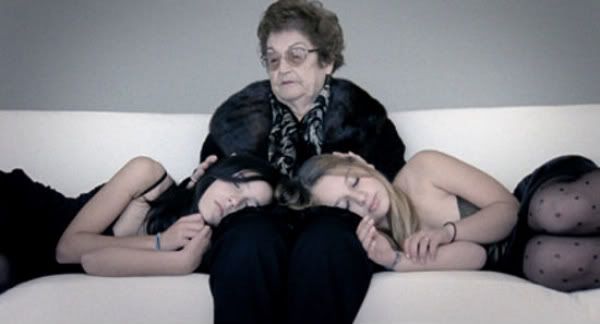
The film opens with the same Vangelis score for Blade Runner in a giant football stadium where our two teen girl protags stretch their legs before a football match. The blonde one is 14 and the dark haired one is 13 and they are cousins. Their ancient grandmother is old and trying to decide just who will inherit her fortune. The grandma sets up a test for them to see which would be a better choice in her gigantic estate near an ominous dam.
The film is a constant battle of opposing images and texture- enormous concrete structures, baby goat, huge glass windows, teenage girls' faces, looming trees and mountains and ipad... After a night of hard drinking and dancing, the girls come home and crash on grandma's lap. The grandma tells her dream where she is a grand inquisitor condemning two young Arab boys to the stake for fondling each other. In the morning, the girls find their grandma dead, and the cousins become rivals for the inheritance.
Weird, dreamlike and beautiful, Palaces of Pity is a playful take on rejecting the old ways of Portugal. It shares thematic similarity with current Greek cinema where generation gap takes an ugly turn. But Abrantes and Schmidt distinguish themselves with sensual imagery. To start a new, the clueless and carefree young'uns will even burn the palace down without knowing the country's history!
